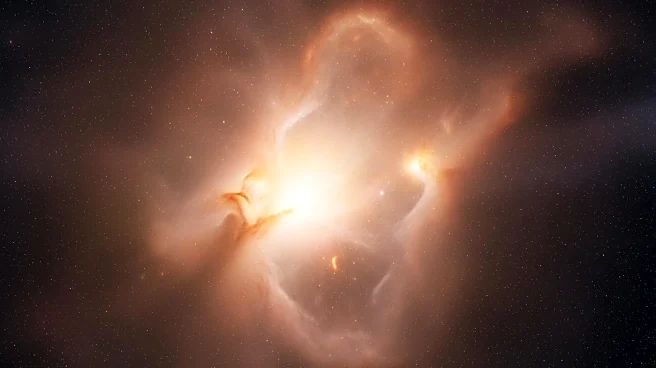What is the story about?
What's Happening?
A study by the International Centre of Radio Astronomy Research (ICRAR) suggests the early universe was 'pre-heated' before the formation of the first stars, challenging the assumption of an ultracold state. The research indicates that early X-ray sources from black holes and stellar remnants contributed to this heating. The study focuses on the Epoch of Reionization, when the first stars ionized cosmic hydrogen, making the universe transparent to light. Astronomers are using the Murchison Widefield Array radio telescope to detect signals from this epoch, despite interference from other radio sources.
Why It's Important?
The discovery of a 'pre-heated' universe provides new insights into the conditions leading to star formation and the evolution of cosmic structures. Understanding the Epoch of Reionization is crucial for comprehending the universe's development and the formation of galaxies. This research may lead to revised models of cosmic evolution, impacting theories about the universe's origins and the role of black holes in early heating processes.
What's Next?
Astronomers will continue to search for the hydrogen line signal from the Epoch of Reionization, using advanced radio telescopes to overcome interference. As more data is collected, researchers hope to refine models of the early universe and uncover new information about cosmic evolution. The study's findings may prompt further investigation into the role of black holes and other sources in the universe's early heating.
AI Generated Content
Do you find this article useful?















